
Reclamations
How do cities rise from the sea? Land reclamation is the process of creating new habitable territory in areas normally submerged by water. Malaysian photographer, Raz Talhar, witnessed the process as it occurred in the Straits of Johor, capturing the morphological transformation of the landscape, from the emergence of sand dunes to towering high rises.
Eight years ago, land reclamation wasn’t something I knew much about. The same was probably true for the majority of inhabitants of Johor Bahru in Malaysia, the place where I was born and raised. Johor Bahru is the capital city of the state of Johor and is located at the southern end of the peninsula of Malaysia. Johor Bahru’s closest foreign neighbour is the island Republic of Singapore, which sits just opposite across a narrow stretch of water known as the Straits of Johor.
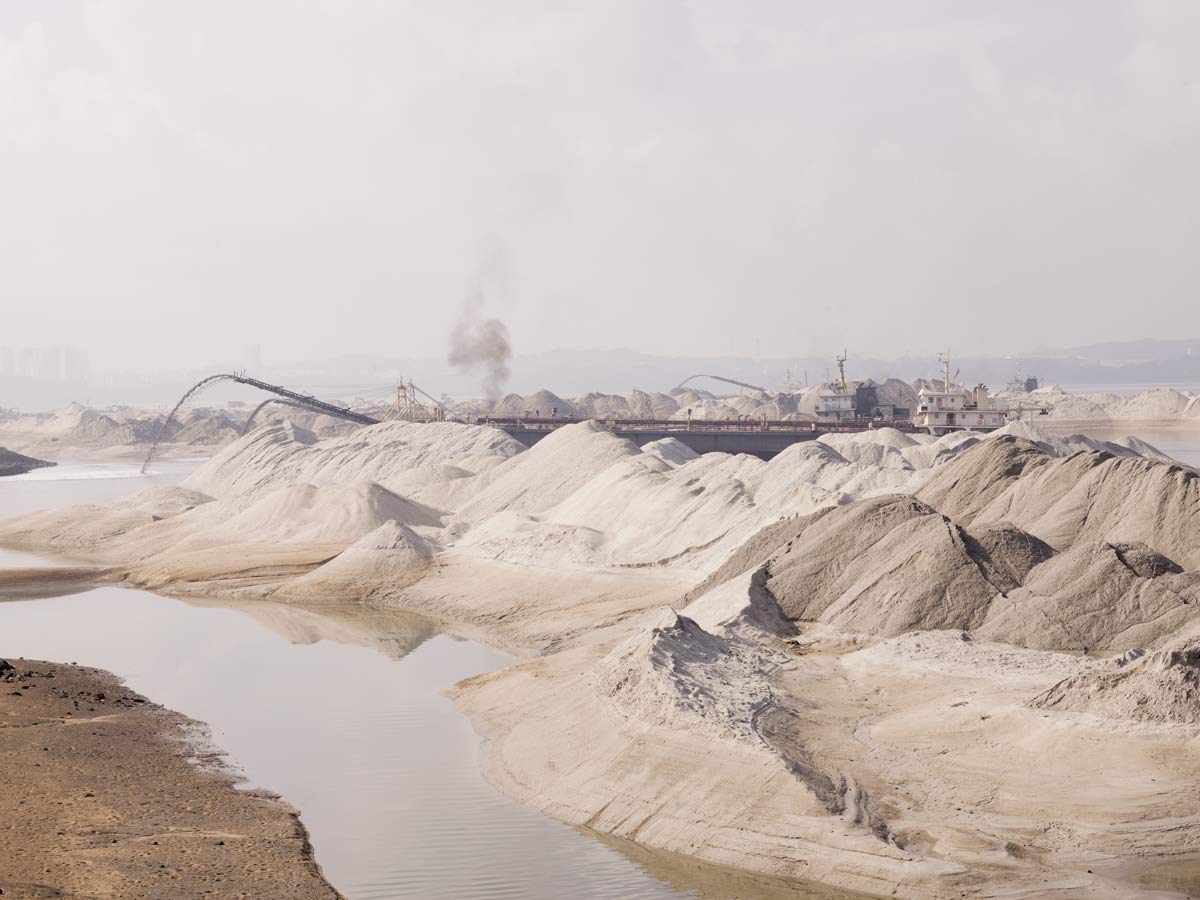
In 2014, strange ships of a design I had not seen before began to arrive in the Straits. They were a motley collection of vessels of varying sizes, some as long as 36 meters. The one common design feature they all shared was a long extended conveyor belt system that protruded from their bows. As quickly as the ships had arrived, they sprang to work. For me, it was a shock to see the Straits, a normally quiet reserved stretch of water, suddenly erupt into a commotion of activity. Vessels began sailing up and down the length of water like a busy highway, drowning out the area with a din of thumping diesel engines and the racket of speeding conveyor belts. Two, three or even more ships at a time worked on the site at any one time. The ships were carrying huge amounts of sand in their holds and by using their bow-mounted conveyor belts they would expel it into the water below.
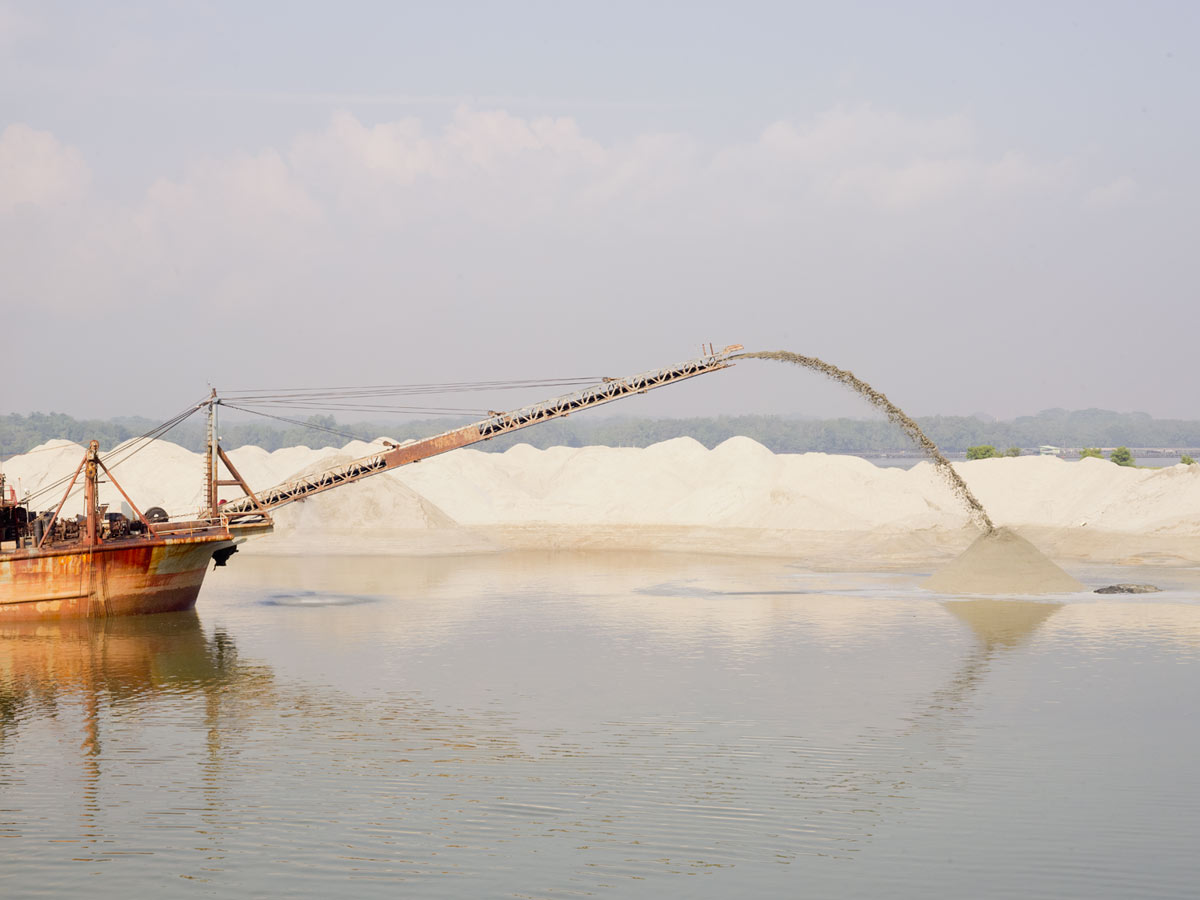
After only a handful of weeks, the site was beginning to undergo a startling transformation. From my shoreline perspective, gauging size and scale was difficult – it was easy for my imagination to run wild. What I was seeing was a landscape being conjured straight out of the sea. Small islands were the first to rise up above the water, slowly expanding and growing over time into a whole mountain range. Regularly, whole sections of the site would completely transform and be sculpted into different forms and shapes.
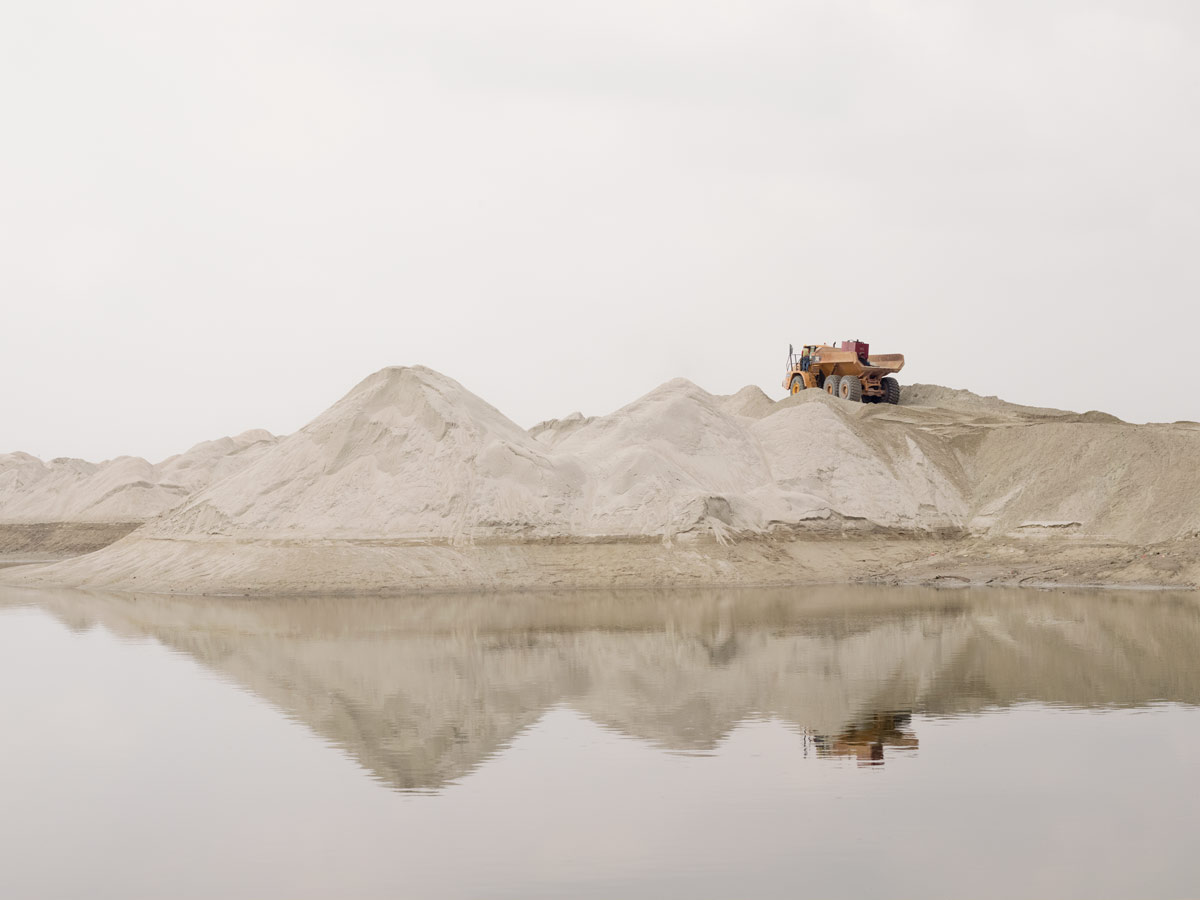
We were treated to this visual novelty for less than a year. The faux mountain ranges were eventually flattened with bulldozers and the site developed into a rather unremarkable slab of land. The final size was around 22 hectares which now connected seamlessly with the existing mainland. What had I just witnessed? The speed with which these ships had arrived and executed their job was impressive, if not slightly disturbing. But this was only the beginning.
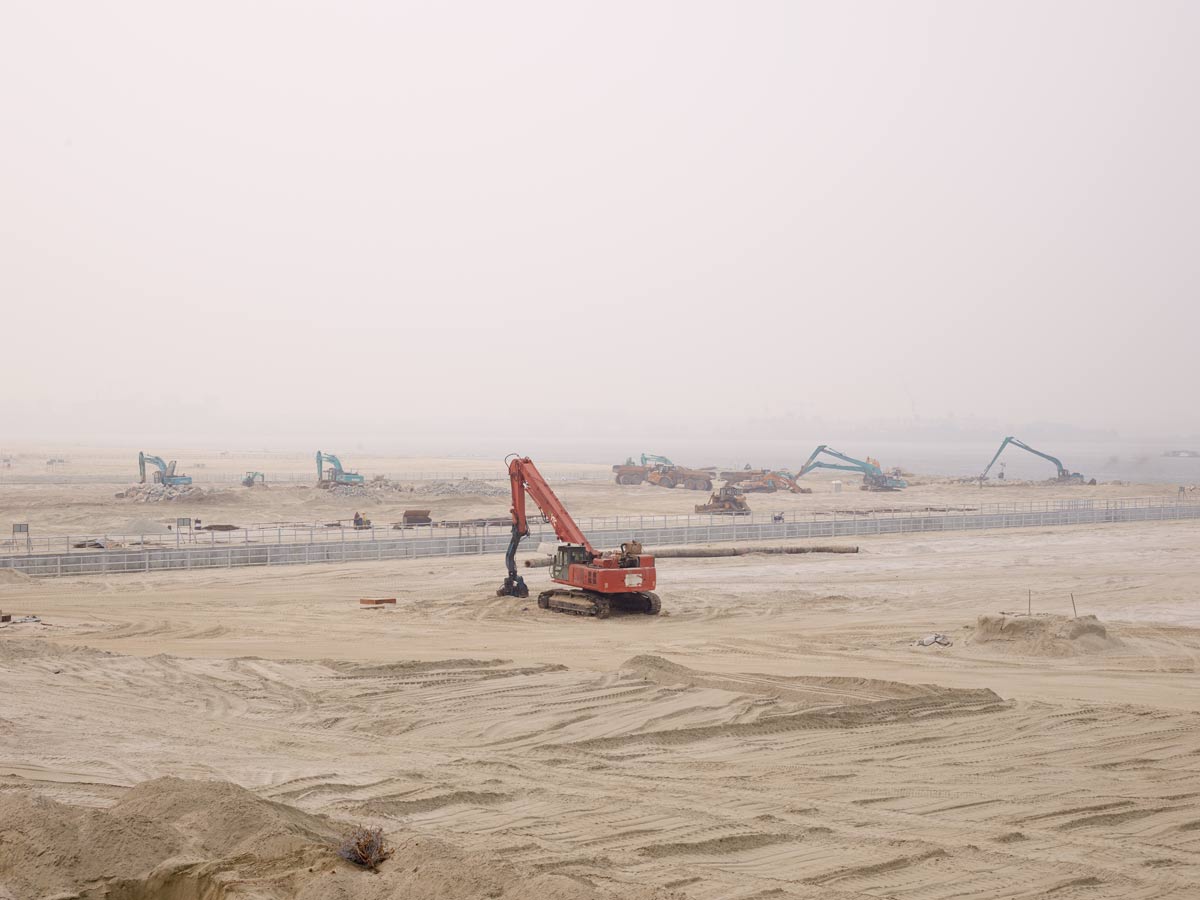
Land reclamation is the man-made process of creating new land from the sea. It is carried out by mining huge quantities of material, such as sand, then depositing this filler material directly into the ocean. I later learned that the sand that these ships carried was usually mined from completely different locations by specialist companies. They predominantly displayed west African port names on their sterns, ranging from locations such as Equatorial Guinea to Sierra Leone. Their crews, for the most part, seemed to largely remain on board ship. They only ventured out onto the ship’s skiff to collect food supplies at pickup points along the shore.
I never accessed reclamation worksites during their construction phase – the danger level was too high – yet, it was important for me to see what a reclaimed piece of land was really like up close. The best solution was to find a completed project – one that had been left to settle. These sites weren’t too far away from urban areas and yet, when you were on them, it felt like you were a million miles away from everything.
Construction work had completely stopped here and all the heavy machinery and equipment moved onto other projects. All that was left was a great sea of sand. I accessed all of these sites on foot. It was challenging work covering all the areas I wanted to explore. The sand underfoot was soft and unsteady and combined with the tropical heat, it made for slow progress. I sometimes shared my walks with locals who followed the same routes to reach their fishing grounds. Areas these locals had previously relied on to survive had since been destroyed and pushed further away from their villages. This walk was their daily commute and, for a couple of years, it was mine too.
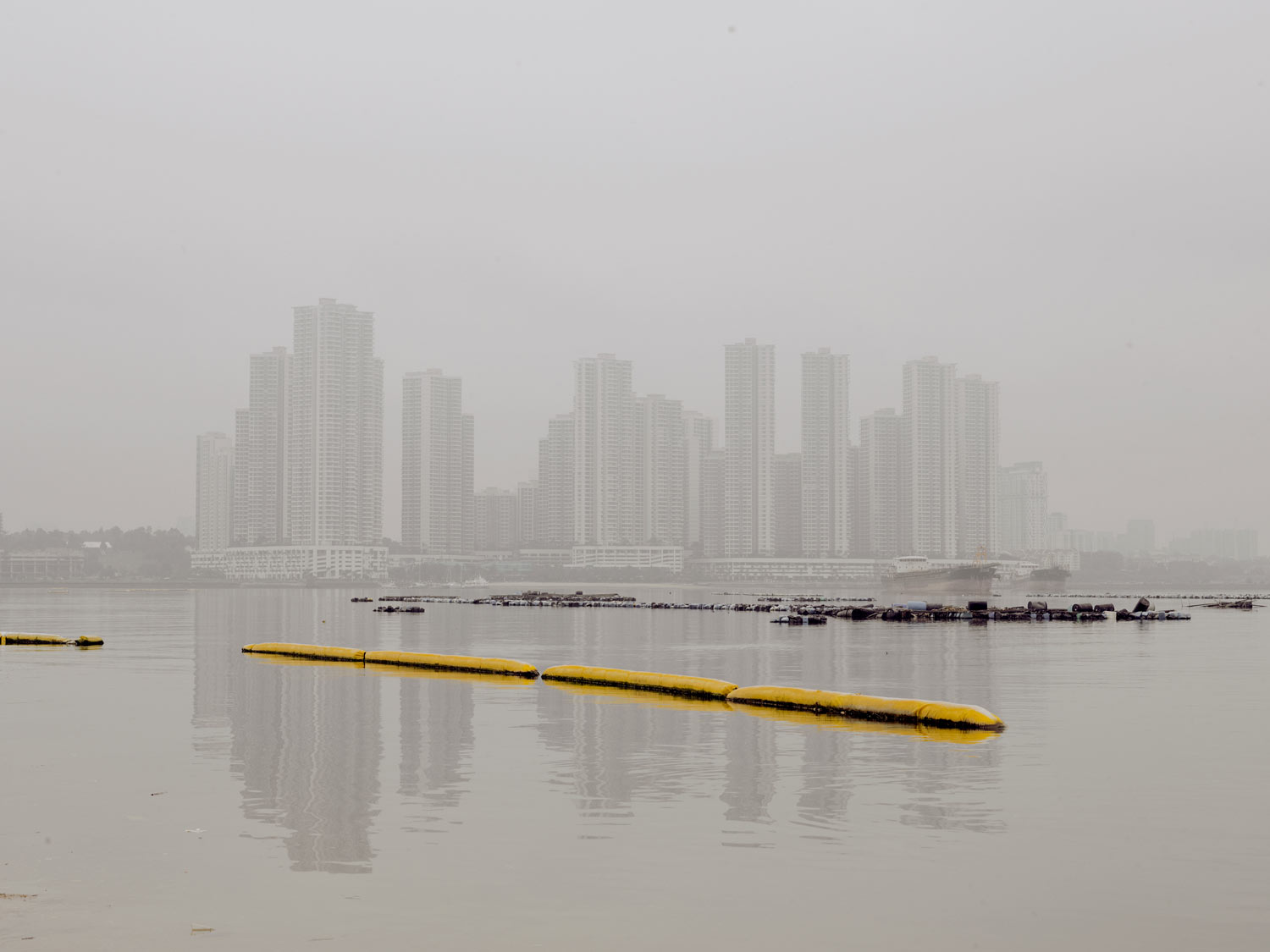
Several more reclamation areas started appearing up and down the Straits in the following months and years. Some of these new areas have sat completely undeveloped since their manufacture, while others have been fully developed and become small self-contained cities in their own right.
Developments like these tend to be high density in nature, packed with condominium towers, offices, shopping malls and entertainment outlets. These new developments with their residential tower blocks and gleaming exteriors have, in a way, become beacons of modernity that stand completely apart from the rest of the older established urbanscape.
New road networks and highways have been especially built to effortlessly usher the public in. Many of these developments make use of tropical landscaping within their projects, which helps break up the monotony of the concrete and tarmac. Slightly disconcerting, however, is how empty at times these developments can seem. Perhaps it is due to their sheer scale and size – without enough human inhabitants, they can appear semi-abandoned. But these particular developments are small fry compared to what’s out there.
Just 27km west of Johor Bahru is the largest of the reclamation projects. It’s called Forest City. When complete, Forest City will be 2,000 hectares in size and be able to house up to 700,000 people on 4 man-made islands. Something as vast as this will take time to build, hence why, if market forces dictate, it will be staggered over a 30 year period.
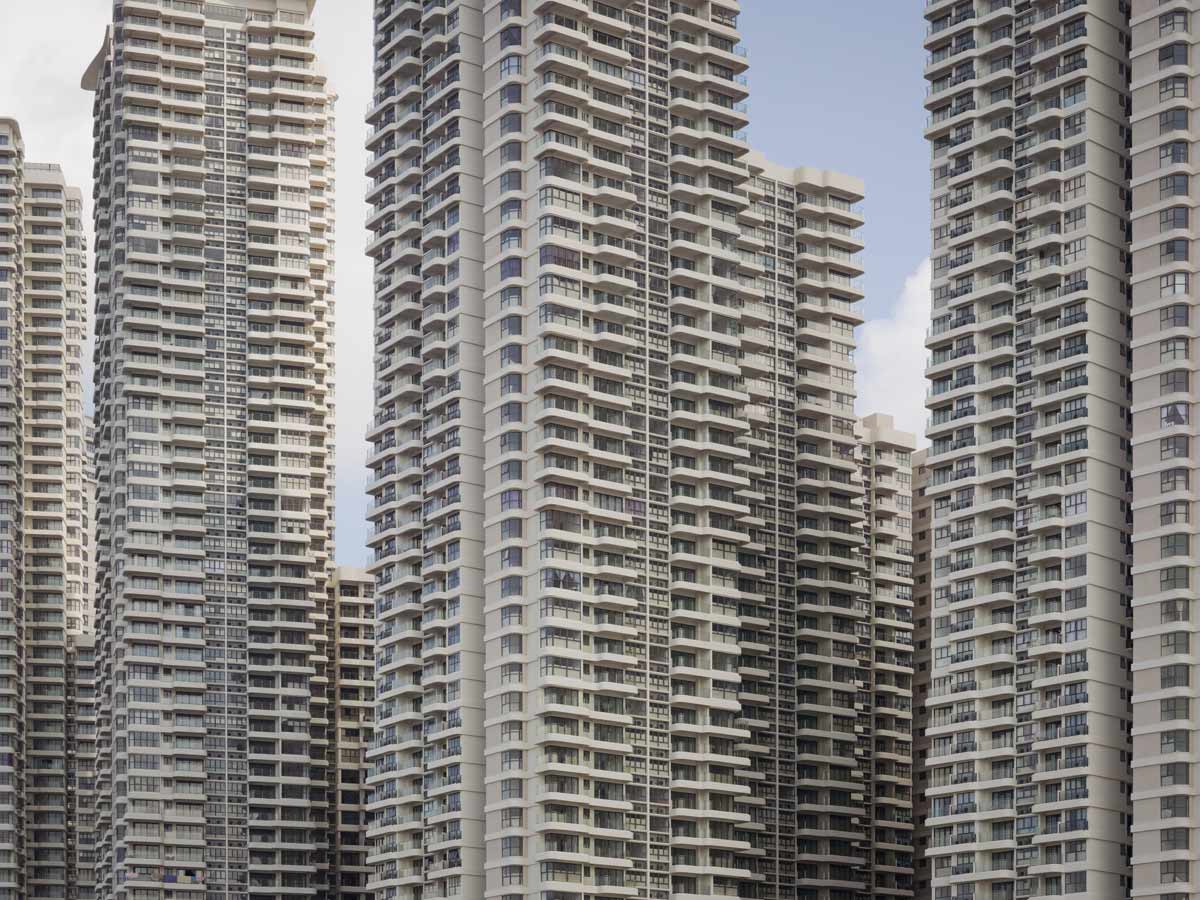
From an economic point of view, there’s no denying that these reclamation projects, when fully up and running, carry great potential for those concerned. But there’s a flip side. The Straits has always been an ever-present feature of the landscape, calming in its appearance with its only movements coming from the rise and fall of the tide and wind. The Straits is lined with mangrove forest growth along its shorelines.
But for these projects to exist, mangrove forests, wetlands and marine ecosystems have all been adversely affected or completely destroyed. Parts of society are also paying a price, in particular, indigenous populations who, for generations, have depended on these same natural areas to live and survive. One of the main indigenous groups to be chiefly affected by reclamation works are known as the “Orang Seletar” (Straits people). For hundreds of years, the Orang Seletar community lived as sea nomads living predominately on wooden longboats and roaming freely around the waters of Johor and Singapore.
Today, the Orang Seletar no longer practise a nomadic life and now live in villages dotted along Johor’s coastline, with many still reliant on the sea to provide for their basic needs. With the arrival of large scale development and reclamation works, these villages and communities are now under threat, losing the very environment they depend on to survive, even being displaced from their homes. This year in 2021, the state of Penang on the north-west coast of Malaysia, will commence with its own massive land reclamation project. It will consist of 3 man-made islands totalling up to 1820 hectares in size.
Initially, I was captivated by the land reclamation process and the fleeting landscapes that it creates, but after observing it from start to completion, I cannot help but think of all those unheard claims, at risk of being submerged by the sand.
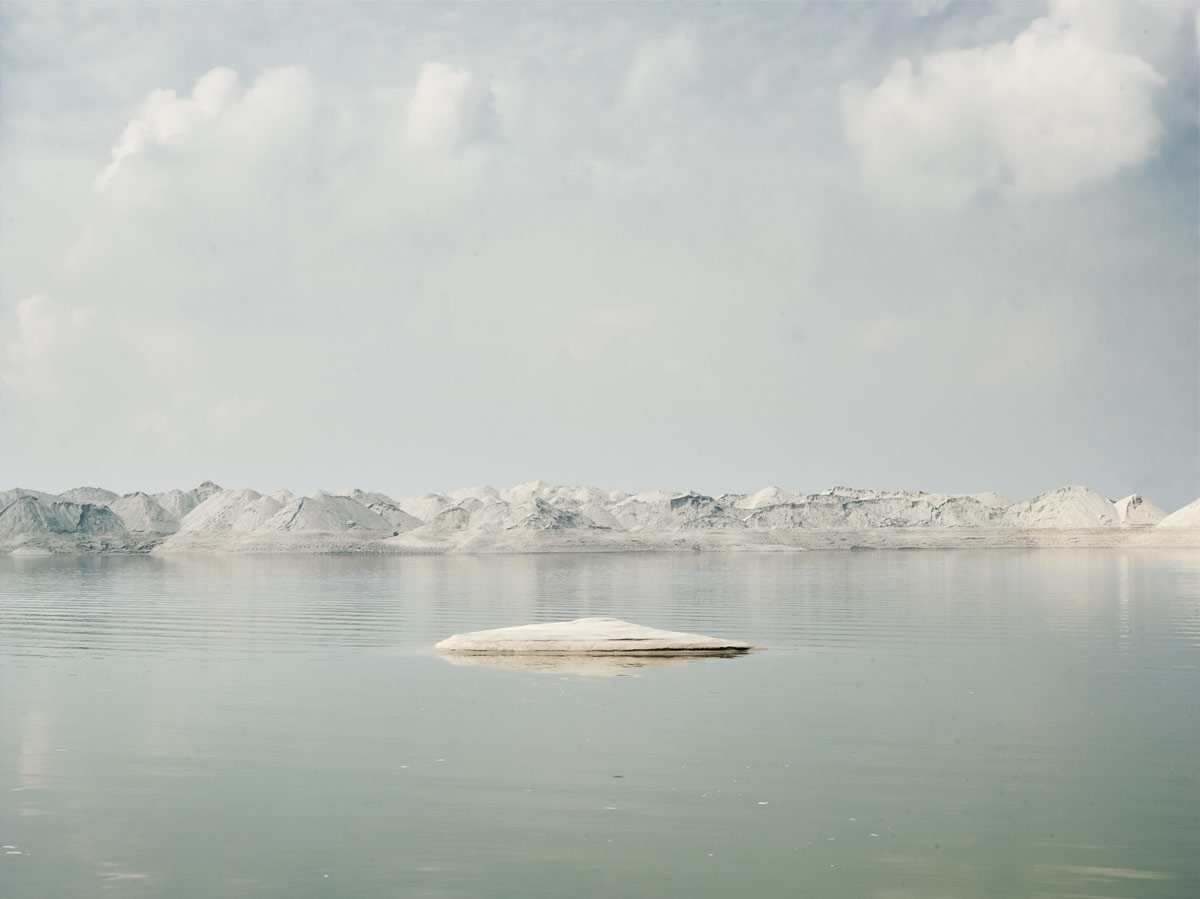
All photos © Raz Talhar
Recent articles

Southern California is many things. Quite infamously, it is known as a landscape defined by the automobile, from the emergence and diffusion of the highway system to fast food burgers, and the suburbanization of the United States. Walking this place then, would seem not only inconvenient, but ill advised. In… Read more »

What is today known as ‘whistleblowing’ could once take the form of interacting with a threatening gaze carved into the city wall. It is the case of the ‘boche de Leon’ or ‘lion’s mouths’ disseminated by the old Venetian Republic throughout its territory to suppress illegal activities. Through a close… Read more »

As he navigates through the recurrent lockdowns of the pandemic, stranded between hitchiking and muggings, job hunting and separations, Fabio Valerio Tibollo rediscovers photography as a powerful coping mechanism. Recording everything that happened around him for one year straight, from attending momentous events to finding curiosity in shots of simple living,… Read more »

